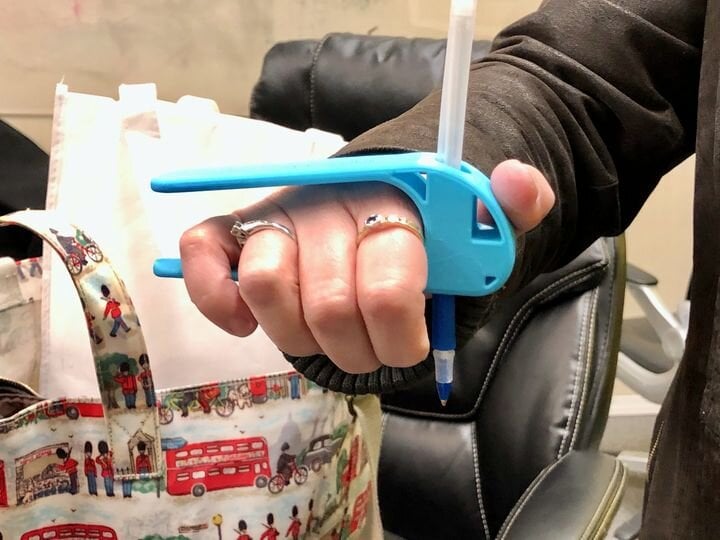![A 3D printed key-turning aid [Source: Fabbaloo]](https://fabbaloo.com/wp-content/uploads/2020/05/mmc-key-turner-1_img_5eb08bd97f57f.jpg)
I hadn’t heard of this organization previously, but you need to know about Makers Making Change.
Makers Making Change is a British Columbia-based non-profit operation providing a link between people with disabilities and makers. The project accepts three types of participants:
-
Persons with Disability, who require the use of a low-cost device to make their life easier
-
Makers, who can both design and make disability devices
-
Disability Professionals, who can review designs in the MMC library, and help the disabled find the right device
Makers Making Change explains:
“Makers Making Change offers a platform for makers (engineers, hobbyists, students, corporations, etc.) to volunteer their time to make an access solution from our projects library. People with disabilities, their family members, or disability professionals can request a project that they feel will help address a person’s barriers.
You may freely download the designs and skilled volunteers in your community can work with the recipient in ensuring the project meets their needs.
Our platform enables everyone to publish and share open-source assistive technology designs, made both by our organization and other makers. People can share access challenges, solutions, and review existing projects.”
Makers Making Change intends on covering North America with local makers to address the needs of the disabled locally. If successful, I imagine they might expand to more distant locations as well.
3D Printed Assistive Objects
What type of objects could be used to help the disabled? You often hear about 3D printed artificial hands, but there are plenty of other much simpler items that can be of incredible benefit to people with specific disabilities.
At top you can see what’s called a “key turner”. This is a device that allows someone with poor grip and unable to hold a key sufficiently steady can much more easily wield the key.
![A 3D printed bottle-opening aid [Source: Fabbaloo]](https://fabbaloo.com/wp-content/uploads/2020/05/image-asset_img_5eb08bd9c9b14.jpg)
This item is quite interesting; it’s a bottle opener. Many people have very poor grip, and this prevents them from opening bottles. This device leverages a small amount of grip to create a circular force on the bottle top.
![A 3D printed writing aid [Source: Fabbaloo]](https://fabbaloo.com/wp-content/uploads/2020/05/image-asset_img_5eb08bda1ab9e.jpg)
Finally, here is a writing aid. The pen is placed into the device, where it is held fast. The operator can then write without having the ability to hold the pen.
As you might imagine, there are countless more applications for disabled people. There are many types of disabilities, and some of them can be alleviated through the use of assistive devices.
Currently in the MMC project library, there seems to be something less than a hundred different projects for all kinds of applications.
If you are interested in supporting this venture, please consider signing up.
Via Makers Making Change

